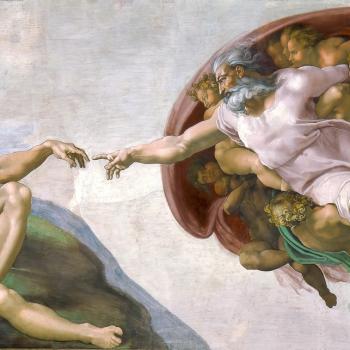This article is a follow-on to one published previously on this website (“Time and Immortality”). The reader may do well to review the previous article beforehand, as it broaches an unconventional view regarding the nature of existence and our experience of the passage of time. In essence, the prior article speculates that the deep/subtle structure of the cosmos exists as an eternal, unchanging “Now”, and that our experience of a changing, living cosmos, in the passage of time, occurs as collective consciousness views a series of “snapshots” of subsets of the whole – quite a bit like a motion picture film. (Trust me, this will make more sense if you’ve read the above article.) In other words, time is something Consciousness imposes on the Grand Cosmos, in order to enable life to flow as a sequence of events. Yet beneath this, all time and events are concurrent.
Continuing the speculative nature of the prior article, the above model has some interesting implications for the nature of memory.
The standard conception of the phenomenon of memory is that the brain functions sort of like a “wet-ware” version of a computer hard disk or a videotape or some other physical means of recording and replaying images, sounds, and events. Although any life-event contains literally billions of bits of information, somehow the cells, neurons, chemical and electrical activity of the brain are thought to record these – at least in some summary form that enables the brain later to reconstruct the experience of the event.
Then, as cells die off, chemicals fade, and neural circuits change over time, the memory gets progressively more fuzzy and inaccurate, until it finally fades altogether. This is a sensible, appealing, “scientific” explanation – even though I am not aware of any fully developed theory or hypothesis as to how such brain recording actually occurs.
… so try the following alternative explanation on for size:
Again, the ‘Time and Immortality’ article cited earlier proposes that time and all possible events exist concurrently in the substrate of the Cosmos – and that our experienced world emerges as consciousness (both individual and collective) takes successive views or snapshots of parts of that whole. These successive views comprise a particular path (or “world-line” in Einstein’s terminology) through the infinity of possibilities, thus creating the narrative of life as we experience it.
As Consciousness moves along its world-line, a particular configuration is brought into prominence and experienced as “the present”. Then this “event” fades from view and becomes “the past” as Consciousness moves on to the next view.
There is a very cute illustration of the above if you are a user of Apple Macintosh computers (with the current operating system OS X). On the main screen, there is a “Dock” which contains icons for a number applications, all arranged in a line. As you move the cursor along the Dock, the icon currently pointed to swells in prominence, and those prior fade back to normal size. The moving cursor roughly illustrates the way Consciousness highlights the present, through the apparent passage of time.
From a higher-dimensional perspective then, there is no literal “past” from which to record a memory. The event that we think of as “past” still exists in the Now but has simply receded from the current focus of Consciousness. (Yes, I acknowledge that “successive focus of Consciousness” seems to imply a past-present-future arrangement, and therefore the passage of time, but this is only so because we are currently stuck in the four dimensions of the space-time universe and cannot see it any other way.)
The Nature of Memory
If memories don’t exist as physio-electro-chemical recordings, how else might they occur? If, as suggested above, all possible past, present, and future events exist in a concurrent Now; and if the present occurs as a particular focus on a subset of these possibilities; and if life flows as a sequence of these “presents” – then perhaps so-called “memory” of the past is simple a progressively hazier focus on prior of these foci. In other words, memory is not so much replaying a recording as it is continuing to view an event in the eternal Now, but through a lens that is getting progressively more obscure.
Various religions and philosophies posit a superordinate, transpersonal field of consciousness – Hinduism’s “Akashic Record”, Ervin Laszlo’s “Akashic Field”, de Chardin’s “Noosphere”, Sheldrake’s “Morphogenic Field”. In these alternative views, the brain is seen not so much as a storehouse of information but rather as a transducer that “tunes in” to a superordinate field or pool of information and experience – sort of the way a television tunes in to various broadcast stations.
The above views seem quite compatible with the model proposed in this paper.
Is the Future Predetermined?
Even in the conventional view of physics, many believe that the cosmos moves along its path according to rigid laws — and therefore the future is an inevitable outworking of these laws in the present. In other words, the future is predetermined. The implication for human psychology then, is that any notion of “free will” is an illusion. (I believe even Einstein was of this persuasion.)
On first sight, the model described above would seem to imply this as well. If everything we think of as past, present, and future all exist in a concurrent Now, wouldn’t that mean that the future has in some sense already “happened”?
In brief: No! I acknowledge that the following is so contrary to normal experience that it is difficult to “grok”, but according to the above model, an infinity of past, present, and future events all exist concurrently. As suggested earlier, in order to create life experience, Consciousness traces a particular path or world-line through this infinity of possibilities.
In all cases – past, present, and future — there are “parallel realities”, with varying degrees of completeness, that exist alongside experienced reality. Perhaps paranormal phenomenon – ghosts, prophetic visions, past life memories, clairvoyance, and the like – occur when our particular world-line gets a bit fuzzy and there is some bleed-over from other coexistent configurations of the Cosmos (i.e. those we think of as “past” or “future” or “alternative”).
As to the future, like the past and present, there are an infinity of possible paths for our individual and collective world-lines. In the latter cases, the path has largely been chosen. The future path however, while influenced by past and present choices and events, still has many alternatives available. Which of those are realized is still substantially determinable by Consciousness. So choose with wisdom and compassion!
The Difference Between Memory, Dreams, and Imagination
Hmm … this one may have to await a future white paper.
Where Are We Headed? The Evolving State of Consciousness
Although the world we experience seems pretty rigidly stuck in the three dimensions of space and one of time, even mainstream science posits there must exist additional dimensions to the cosmos. As pointed out in the Time and Immortality paper, as one ascends the ladder of dimensions, all states of the lower dimensions become immediately available from the perspective of the next higher dimension.
Accordingly, if human consciousness should become sufficiently evolved to perceive a fifth dimension or beyond, perhaps all states that we currently think of as past, present, and future would become available and experience-able. We might then be able to watch the emergence of life on Earth, have lunch with Cleopatra, and dinner with Abraham Lincoln.













